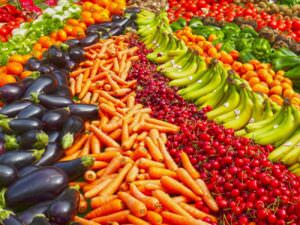Vegetarian Diet or Vegan Diet: Fast Facts
If you’ve ever struggled to maintain your weight, resolved to get into shape, or to improve your overall health, you are probably familiar with a plethora of diet options. Do any of these sound familiar?

Photo courtesy of Pexels.com
- WeightWatchers
- Jenny Craig
- Mediterranean Diet
- Grapefruit Diet
- Slim-Fast
- Scarsdale Diet
- Ornish Diet
- Subway Diet
- Atkins
- Nutrisystem
- Apple Cider Vinegar
Although some of the diets listed above have been tried and true, others have amounted to nothing more than a fad, still others are indubitably dangerous for our health.
More recently, there has been a feverish interest in the vegetarian diet. Let’s explore the vegetarian lifestyle and its many flexible options.
Simple Facts About a Vegetarian Diet

Photo courtesy of Pexels.com
Vegetarian eating patterns have been associated with improved health outcomes including:
- lower levels of obesity,
- reduced risk of heart disease
- lower blood pressure.
This sounds like a sensible way to modify your food choices. But exploring this lifestyle option can be confusing. Researching a vegetarian lifestyle can be confusing. Here is the long and short of it. Naturally, if you decide to adopt a vegetarian diet, one must consult with a nutritionist or doctor before proceeding in order to truly understand a balanced vegetarian diet.
Simply put, here is the fundamental difference between vegan and vegetarian:
- Vegans eat no animal products
- Vegetarians don’t eat animals but may eat products that come from them (such as dairy and eggs).
Then there are the “ subgroups”:
Among the many types of vegetarian diets, three are particularly common: a pescatarian allows seafood; a lacto-ovo diet allows dairy products and eggs. Some people follow a semi-vegetarian diet — also called a flexitarian — which is primarily a plant-based diet but includes meat, dairy, eggs, poultry, and fish on occasion or in small quantities.
These are just a few of the various vegetarian options. As you can see, it can get confusing. But a good nutritionist or physician can guide you to the best choice.
Easy Does It

Photo courtesy of Pexels.com
The Mayo Clinic reminds us to “Keep in mind that the more restrictive your diet is, the more challenging it can be to get all the nutrients you need. A vegan diet, for example, eliminates natural food sources of vitamin B-12, as well as milk products, which are good sources of calcium.”
Kathy McManus, director of the Department of Nutrition at Harvard-affiliated Brigham and Women’s Hospital notes: “ A vegan diet also comes with health risks, especially for older adults, although you can take action to counteract those risks. In particular, when you cut out animal products, you may come up short on certain nutrients: Get rid of red meat, and then poultry, and then dairy products and fish. But don’t feel that you have to eliminate all of them at once.”
Important Nutrients Call for Special Attention

Photo courtesy of Pexels.com
According to Harvard Health, vegetarians should consider potential deficiencies:
- Calcium is important to many functions, especially bone, dental, heart, nerve, and blood health.
- We need protein to build strong muscles, bones, and skin — particularly as we age and lose muscle and bone mass and have a harder time healing from wounds.
- Vitamin B12. This vitamin comes only from animal-based foods. B12 is crucial to our DNA, red blood cell formation, new cell growth, glucose metabolism, and maintaining our nervous system and thinking skills.
- In addition, you may have trouble getting enough calories on a highly restricted diet. If you don’t give your body enough fuel, you may become tired or malnourished.
https://www.health.harvard.edu/staying-healthy/is-it-safe-to-go-vegan-in-older-age
Ready, Set, Go!
The Mayo Clinic suggests the following steps:
Getting started
One way to transition to a vegetarian diet is to gradually reduce the meat in your diet while increasing fruits and vegetables. Here are a couple of tips to help you get started:
- Ramp up. Each week increase the number of meatless meals you already enjoy, such as spaghetti with tomato sauce or vegetable stir-fry. Find ways to include greens, such as spinach, kale, Swiss chard, and collards, in your daily meals.
- Take favorite recipes and try them without meat. For example, make vegetarian chili by leaving out the ground beef and adding an extra can of black beans. Or make fajitas using extra-firm tofu rather than chicken. You may be surprised to find that many dishes require only simple substitutions.
- Branch out. Check the internet for vegetarian menus. Buy or borrow vegetarian cookbooks. Check out ethnic restaurants to sample new vegetarian cuisines. The more variety you bring to your vegetarian diet, the more likely you’ll be to meet all your nutritional needs.
Always check with your doctor prior to changing your diet.
For great direction and more information and a list of area professionals focusing on plant-based diets: https://rochesterveg.org/wp-content/uploads/2019/06/Rochester_Veg-Friendly_Health_Professionals_6-19.pdf
For more by Virginia Tortorici, click here.